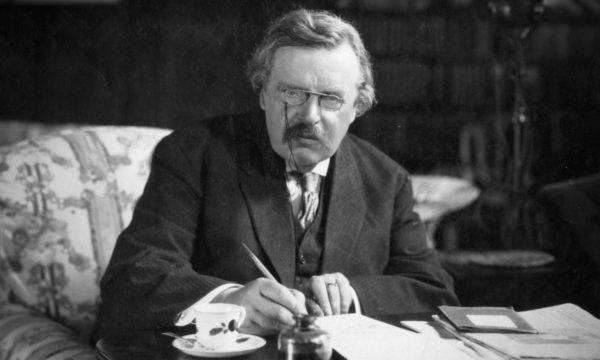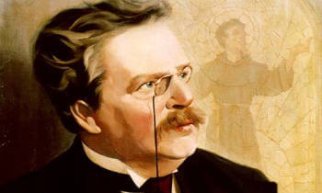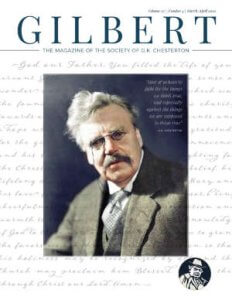Collected Works, Volume 14, Part Three
What Might Have Been
According to G.K. Chesterton’s own account, he became a journalist by accident. But it is clear that he was an aspiring writer long before he made his living as a writer. The discovery of his early notebooks revealed that he was developing his literary skills just as a master musician must practice and practice on his instrument, taking whatever ready and innate talent and utterly mastering that art. Reading these stories, some complete, most incomplete, is like listening to that prodigy at practice. There are brief flourishes of virtuosity, there are also random but still beautiful notes, left hanging in the air. There is the frustration of hearing only part of a complete work, there is the anticipation of hearing something not quite ready for the audience. We are eavesdropping, listening through the wall. It is both frustrating and exhilarating.
Perhaps the comparison to a painter would be even more appropriate. We are seeing sketches, color studies, creative experiments, but no finished masterpieces. He can indeed paint vivid pictures using only words. He can combine two or three words perfectly, in a way we could not have imagined, the way a painter combines two colors in an entirely new juxtaposition. He paints familiar scenes to make them startling. He makes wildly imaginative vistas look like classical landscapes. Here are some of the things we see in this gallery of early Chesterton:
In the earliest fragment, a hero named Flickerflash escapes from goblins and is sheltered in the forest, comforted by the chattering of a squirrel and the banging of a woodpecker.
In “The Queen of the Evening Star,” we meet a magical woman, not unlike an apparition of the Blessed Virgin Mary, and we also meet, appropriately, the earliest of the many Chesterton characters named Gabriel. Unlike Hope, Syme, and Gale, this Gabriel has no last name.
In “The Bells of St. Cuthbert,” the saint sits in the belfry of his hermitage and decides to let the ringing bells go free, cutting the ropes and watching them fly away, telling them that he will let them know when they must return. What an image. But we never learn of their adventures.
We do learn, however, of the adventures of Prince Wild-fire, who “seemed as if he had come to edge of the world, and, as science was not invented then, perhaps he had.”
“A Traveller’s Tale” is a rare and very revealing first-person narrative. The narrator describes growing larger and larger against his will, being told that he speaks very well, and that he is known as “the poor mad boy who stares at everything.” He is struggling against madness but also against greatness. He desires to be simply normal. In a passage that pre-figures his later writing about the Book of Job, he tells of being the first to witness creation and achieving that feeling of being “indifferent to all the pranks of heaven and earth.”
There is one other, even more wildly creative, first-person narrative called “Apotheosis,” in which the narrator is none other than God. But it is not megalomania. It is a compassionate account of his love for a fellow image-maker. He has heard the song of the woodcarver.
One of the few complete tales in this collection is the tightly-woven “Consistency,” which features a shadow of The Quote: “He was. . . a Roman Catholic and a Royalist, who believed everything, lest he should believe nothing.” Hmm.
In “Why the Moon Was Made,” Chesterton offers an amazing insight into the subjectivity of nineteenth century Protestantism, answering Kierkegaard’s arguments without even having heard them, as a group of Scottish Covenanters debate why the moon was made. Each has his own very narrow interpretation with no consideration of a larger, universal truth. This purely intellectual exchange is subtitled “A Romance.”
“The Appalling Five,” “The Face of Brass,” “The Man with Two Legs” and other fragments found here prefigure The Club of Queer Trades, The Man Who Was Thursday, and Tales of the Long Bow. We even have several tables of contents of unwritten tales, known only by their titles.
Here’s another idea for a story. A man acquires this collection of early Chesterton tales, most of which are unfinished, and he reads one of them aloud to his family each evening. They then try to complete the story or argue about how the author might have intended to finish it, or they fly into a rage that they will never know how it ends. This story about stories would appear to be merely Sisyphusian, because they would sit through the same experience the next evening with the same results, and again after that. “The Story of the Unfinished Stories” is a plot for Camus. But we need not bother with it because we know what all these stories led to. We know how Chesterton’s story ends. And where ours will end. In the Inn at End of the World.





